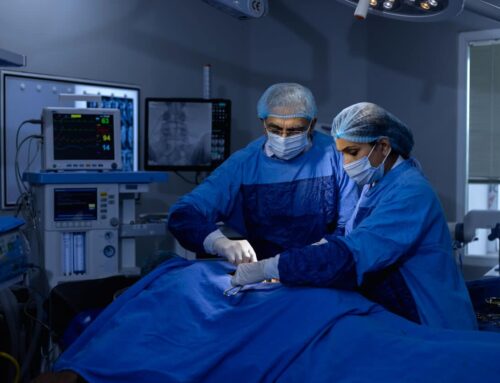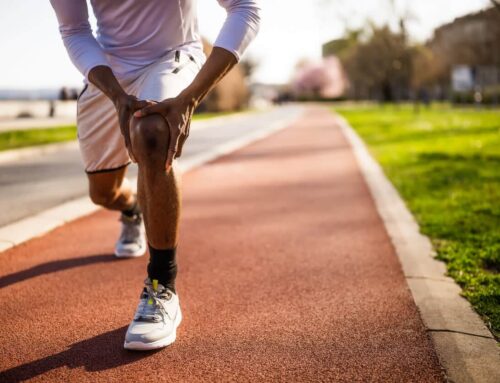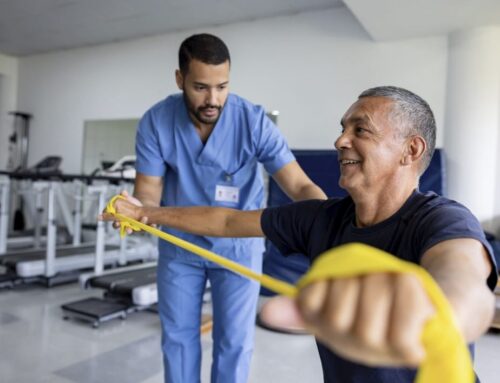The anterior cruciate ligament (ACL) is one of the most critical parts of the knee joint, and a torn ACL can be a common injury. An essential part of the knee, the ACL runs through the middle of the knee and controls the motion of the joint and provides stability. Because damaging the ACL can cause serious and long-lasting mobility problems, it’s important to understand how to recognize and treat ACL injuries.
ACL sprains and tears are common in sports and physical activities involving quick stops, changes in direction or direct impact to the knee. These injuries can range in severity from minor strains to severe hyperextensions and tears.
In this article, Cary Orthopaedics describe the symptoms of an ACL tear and various treatments options.
Types of ACL injuries
There are three identifiable levels of ACL injuries. Each type is technically referred to as a “sprain.”
- Grade 1 Sprain: Stretched but not ruptured
- Grade 2 Sprain: Stretched to the point of loosening, often considered a partial tear
- Grade 3 Sprain: Torn into two pieces, rendering the joint completely unstable
Depending on the severity level, at-home rehabilitation may be an acceptable treatment option for an ACL injury. However, a grade 3 sprain will most likely warrant medical treatment and surgery.
Did you know? Advanced ACL injuries were once considered career-ending for many athletes, but modern medical procedures have allowed for full or near-full recovery within several months.
Signs and symptoms of an ACL injury
For those who have suffered an ACL sprain or tear, the injury itself can feel unmistakable. Many athletes who experience an ACL tear note an audible “pop” or snapping sound and sensation as the injury happens.
The onset of symptoms is immediate in most cases and includes:
- Decreased range of motion in the knee
- Severe pain, soreness and tenderness along the joint
- Rapid swelling and bruising
- Instability and discomfort while walking or supporting weight (knee buckles)
Even if your ACL injury seems minor, showing symptoms is reason enough to schedule a visit with an orthopedic doctor.
Treatment options for a torn ACL
Activity level and lifestyle are key considerations when determining the proper treatment for a sprained ACL. If you have an injured ACL, the best treatment and recovery time depends on the severity of the injury.
Grade 1 Sprain: For a stretched yet intact ACL, protective knee coverings and physical therapy can restore motion and stability.
Grade 2 Sprain: If not undergoing surgery, treatment for a partially torn ACL will usually entail a three- or four-month rehabilitation period of physical therapy and follow-up visits with your orthopaedic doctor.
Grade 3 Sprain: A complete tear of the ACL typically requires surgery to heal fully, especially if you want to maintain an active lifestyle.
Home remedies for ACL sprains
Whether you are waiting to have an ACL injury evaluated by a medical professional or you are treating an ACL sprain at home under the guidance of a doctor, there are multiple nonsurgical treatments you can try to promote healing:
- Rest, ice, compression, elevation (RICE)
- Use crutches and knee braces
- Take over-the-counter anti-inflammatory medication
- Perform stretching and strengthening exercises
What to know about ACL surgery
Because a completely torn ACL cannot heal on its own, doctors may recommend ACL reconstructive surgery. The most common surgical treatment for a torn ACL is knee arthroscopy surgery. This procedure is minimally invasive and usually does not requirement a hospital stay.
In an arthroscopy surgery, the surgeon removes the damaged ligament and applies a replacement tissue graft, often a tendon from elsewhere in the knee or leg. The graft acts as a bridge for the new ligament to grow on and reconnect the bones.
Even with the short initial recovery time, full range of motion, strength and stability may not be realized for up to 12 months or more following surgery. Regular follow-up visits with your doctor and physical therapists are necessary to assess progress and readiness to return to sports activities safely.
Preventing ACL injuries
Physical therapy can help prevent a torn ACL by building healthy knees. By working through specific techniques with a physical therapist, you can improve stability in your body by targeting specific areas that strengthen muscles and build balance.
Regular training and exercise can also help build resistance to ACL injuries by learning the proper technique for stopping, lifting and pivoting to reduce the risk of stress on the knee. When participating in physical activity, wearing proper footwear is important to reduce the risk of injury.
ACL treatment in Cary, Holly Springs and Morrisville
While a torn ACL may seem scary, having an ACL strain or tear should not keep you from engaging in the activities you love. Thanks to modern advancements and surgical procedures, ACL injuries don’t have to hold you back.
At Cary Orthopaedics, our specialists have extensive experience diagnosing and treating a wide range of knee issues, including ACL tears. We can often treat injuries and conditions without surgery using treatments such as injections to reduce inflammation and strengthening through physical therapy.
Our goal is to achieve the shortest recovery time along with the best outcome for our patients. If you or a loved one have experienced a torn ACL, contact our orthopaedic specialists today.






